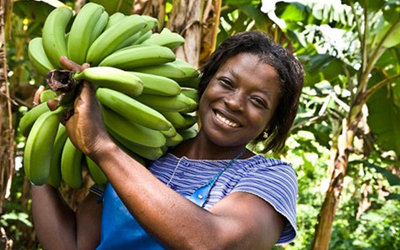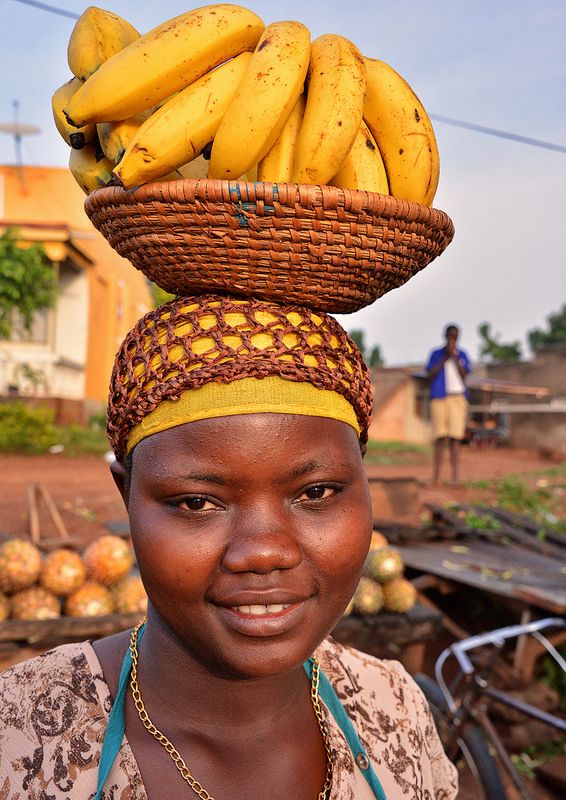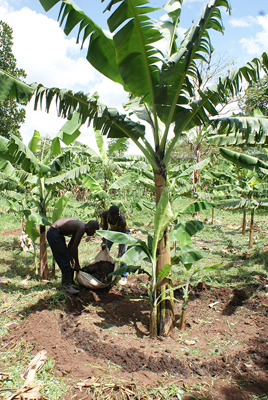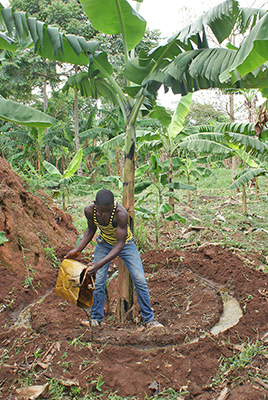
Banana production in Malawi
 Agriculture is considered the engine of Malawi’s economic growth from 2005 up to date. With that said, we have decided to offer you a step by step beginners guide to how you can start producing your own bananas in Malawi without stressing and struggling. This is just part 1 of our guide but it should be more than enough to get you started.
Agriculture is considered the engine of Malawi’s economic growth from 2005 up to date. With that said, we have decided to offer you a step by step beginners guide to how you can start producing your own bananas in Malawi without stressing and struggling. This is just part 1 of our guide but it should be more than enough to get you started.
The main economic products of Malawi are tobacco, tea, cotton, groundnuts, sugar and coffee. The principal food crops in Malawi are maize, rice, sorghum, cassava, potatoes, beans and bananas. Maize is the major staple food crop with 60 percent of the total cropped land devoted to its production. Common bean is the most important legume in Malawi as it is grown as both food and cash crop. Banana is one of the emerging principal food crop in Malawi with almost 40 percent of the total cropped land devoted to its production in areas like Thyolo, Karonga and Nkhata Bay.
THIS ARTICLE FOCUSES ON BANANA PRODUCTION FROM PLANTING TO HARVESTING
In 2018 Banana production for Malawi was 441,282 tons. Bananas production of Malawi increased from 40,000 tons in 1969 to 441,282 tons in 2018 growing at an average rate of 7.13 percent. Production of banana fruits for sale in local markets is among the few agriculture activities that provide households especially in rural poor with regular income throughout the year. The crop is predominantly grown by small scale farmers both as source of income and as house food security crop. Malawi has lately lost 30000 hectares of bananas crop stand representing 90 percent loss all this is due to poor agriculture practices, diseases and lack of access to clean planting materials.
The major problem now affecting the production of banana as a potentially reliable crop is high infestation with various pests and diseases. For banana to give high yield, there should be good agronomic practices. Before planting, there is a need to dig a square holes measuring 90cm wide and 90cm deep. This spacing helps the suckers in reducing competition for food and sunshine. To grow bananas, you need good spacing and deep holes. They should be planted deep for good anchorage and prevent the premature emergence of suckers. In each hole, you need to mix manure with soil before planting. Huge spacing exposes bananas to water stresses especially in dry land, so there is a need to check out for good spacing. Water shortage prevents the formation of canopy and so it is good to observe the recommended spacing of 90cm by 90cm. The canopy forms after 8 months and moisture does not dry.
FOR A BANANA TO GROW HEALTH YOU NEED TO:
- apply fertilizers;
- prune the plants;
- prevent the plants from falling;
- look after the fruit;
- Protect the plants from diseases and insects.
KEEPING THE SOIL CLEAN:
The grass grows a lot when the banana plant is small. When the banana has grown up, the grass dies, because it has no light. So there is no need to sow a cover plant.
APPLYING FERTILIZERS:
You need organic matter in the form of the compost that you put into the planting holes before planting. The leaves and stalks that are cut from banana plants rot on the soil and add more organic matter.
The plantation still needs mineral salts and so there is a need to apply:
- Nitrogen form of fertilizer (750 grams of ammonium sulphate or 300 grams of urea per hole
- Phosphorus form of fertilizer (300 grams of di-calcium phosphate)
- Potassium form of fertilizer (600 grams of potassium chloride).
PRUNING:
Pruning banana plants is called suckering. There are several ways of doing this. But then in this article we will deal with one only. The offshoot that you planted is called the parent plant.
Four months after planting, cut away all the suckers that have sprouted except one. The suckers need to be cut off at ground level or below the surface of the ground and thereafter, keep the best sucker, the one that is best placed. You need to lay out the plantation in rows, so that if the suckers are in the same line, the plantation rows are unchanged Four months after this first suckering.

SUPPORTING THE PLANT:
The fruit of banana plants is very heavy. The plant bends under the weight, and the wind may blow it down so you must prevent it from falling. To do this, cut thick bamboos about 3 meters long. Make a hole at one end of each bamboo and tie it together with the plant.
LOOKING AFTER THE FRUITS:
Cover the whole bunch with plastic. See that there are holes in the plastic so that the bunch can breathe. The plastic protects the bunch from sun and rain. If you do not cover the bunch with plastic, the bananas will get black patches and will not be fit to sell.
PROTECTION AGAINST INSECTS AND DISEASES:
The banana is attacked by many insects and diseases:
- Banana weevil
This insect makes holes in the base of the banana plant and lays its eggs in these holes. They eat out the heart of the banana plant. You do not see the weevils, but if the fruit bunch does not develop, or if the bunch is small and badly shaped, there may be weevils.
- Banana eelworm or nematode
These are tiny worms that are found in the soil. They eat the roots and once the banana has no rots it cannot feed, and may be blown over by the wind. Make sure the bananas have no eelworms when they are planted. Before planting, dip the suckers in lukewarm water.
- Bunchy top
This disease is carried by an aphid. Dark green streaks appear on the leaves. The leaves do not grow long and are wavy at the edges. Dig up the diseased banana plants. The aphid can be controlled with Malathion or Dieldrin.
In Conclusion
We hope you really, we really hope you enjoyed our part 1 of our beginners guide to growing Bananas in Malawi. We are already working on the second part of this and we will have it online very soon, within a week or so, you are welcome to contact me or leave a comment below for any questions or comments. Happy farming!
NOTE: We now have part 2 of our Banana production in Malawi guide.

You can continue to read more articles about farming in Malawi including our guide on how to make Compost.
- Soybeans Production in Malawi - August 16, 2022
- Banana production in Malawi Part 2 - April 17, 2021
- Introducing Mobile Msika Wathu Program by Smart Energy Enterprise - February 16, 2021

